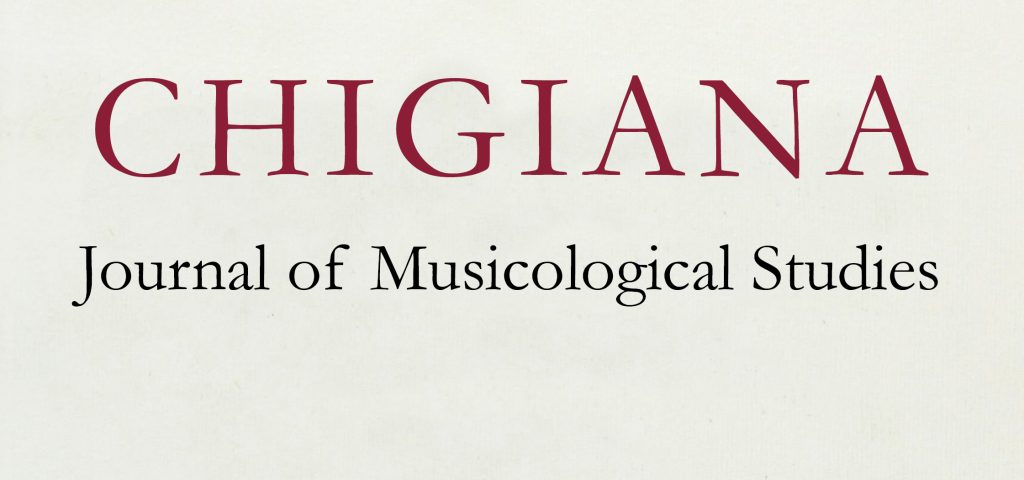
Luciano Berio’s conception of form during the 1950s: Theoretical influences and compositional solutions
English: From the 1950s Luciano Berio’s formal concept was based on the dialectic between form and formation. Generally speaking, form corresponds to an organization of functional events characterized by a strong sense of coherence and continuity (also with tradition, as Berio himself pointed out). These events lead up to a section that, through its instrumentation, modes of attack, dynamics, and rhythmic profile, constitutes the climax of the work. Whereas formation is a process based on the continuous transformation of timbre, register, and dynamics, and, more generally, of an initial event that, recurring at strategic points throughout the work, contributes to determining the piece’s structure (which, for Berio, is never a preexisting schema, but only evolves during the process of formation). Following a brief overview of the debate concerning form in post-tonal music during the 1950s—in which Berio himself advocated a new morphology that would also serve to stimulate listeners’ critical awareness—the theory writings of four authors known to Berio are discussed: Luigi Pareyson, Paul Klee, Raymond Ruyer, and David Katz. In their different approaches to the relationship between form and formation, these theorists contributed to Berio’s own formal dialectic. Using examples from Nones (1953–54), Allelujah I and II(1955–58), Tempi concertati (1958–59), and also drawing on preliminary materials for these pieces, a detailed description is offered of some of the characteristic expedients employed by Berio in the formation process: not only the technique of transformation and recurrence of an initial event, but also his use of groups (multi-parametric events) and gestures (short, easily recognizable rhythmic, melodic, and/or timbric figures that clearly indicate the beginning or ending of an event and thus provide a key to the successive phases of the formal layout).
Italian: A partire dagli anni Cinquanta la concezione formale di Luciano Berio è incentrata sulla dialettica tra forma e formazione. La forma si lascia generalmente identificare come organizzazione in eventi funzionali che presentano un forte senso di coerenza e continuità – anche con le forme della tradizione, come lo stesso Berio non ha tralasciato di specificare – e convergenti verso una sezione che, per le sue caratteristiche (strumentazione, modi di attacco, dinamica, profilo ritmico), rappresenta il culmine della composizione. La formazione si traduce invece in una proces- sualità innervata sulla continua trasformazione della componente timbrica, registri- ca, dinamica e, in senso lato, di un evento iniziale che, ripresentandosi in momenti ‘strategici’, concorre a determinare l’articolazione dell’opera (la quale, a detta di Berio, non è mai data in modo aprioristico, ma si delinea solo durante l’atto di formazione). Dopo una breve ricognizione sul dibattito degli anni Cinquanta relativo alla forma nella musica post-tonale (al quale lo stesso Berio prende parte, pronunciandosi a favore di un rinnovamento della morfologia che promuova al contempo una nuova coscienza critica dell’ascoltatore), il saggio illustra i testi di alcuni teorici noti al compositore (Luigi Pareyson, Paul Klee, Raymond Ruyer, David Katz): essi, delineando da prospettive diverse il rapporto tra forma e formazione, hanno influito sulla definizione beriana di questa dialettica. Con l’ausilio di esempi tratti da Nones (1953-54), Allelujah I eli (1955-58) e Tempi concertati (1958-59), e con il supporto di materiali preparatori relativi ai suddetti brani, si descrivono in dettaglio alcuni espedienti caratteristici del processo formale in atto: oltre alla tecnica di trasformazione e ritorno di un evento iniziale, si illustra lo specifico impiego dei ‘gruppi’ (nell’accezione di accorpamenti multiparametrici) e il ricorso a ‘gesti’ (brevi inserti ritmico-melodici e/o timbrici chiaramente riconoscibili che, investiti di un’evidente funzione articolativa di apertura o chiusura di un evento, risultano determinanti per la scansione e la percezione delle successive fasi formali).
